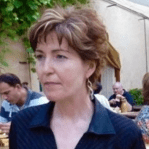Adds Purnomo: “[It’s also a chance for them] to prove to their husbands that women also can plant pineapple and sell it!”
Local farm groups, community organizations and the local Fire Care Community – a kind of volunteer fire patrol – gave essential input to the project planning, says Purnomo, whose team applied a Participatory Action Research (PAR) approach to fostering effective, successful, and workable community-based restoration planning.
Villagers came back with some interesting ideas.
Farmers in Riau province are abandoning slash and burn on peatlands and using paludiculture to grow pineapples, coffee, rubber, coconuts and more
Aris Sanjaya/CIFOR
Farmers in Riau province are abandoning slash and burn on peatlands and using paludiculture to grow pineapples, coffee, rubber, coconuts and more
Aris Sanjaya/CIFOR
“One local community wanted to try producing hybrid coconuts, and another wanted to try a fish pond as a good way to improve their livelihoods, so we thought ‘why not try it?’,” says Purnomo. Finding new products and new markets to boost their livelihoods also contributed to convincing at least some villagers to reject fire as a land-clearing option.
“We are on the ground, trying to demonstrate that there is a way to prepare the land without burning and that there are other sources of income. With cash crops and perhaps trees and pineapple, this will compensate for the costs of land preparation,” without fire, says Purnomo.
Fire is often perceived as an inexpensive and fast way to clear land, with positive impacts including reducing peat acidity, improving nutrient availability, minimizing risks from pests and disease and controlling weeds. But the dangers and costs are also high – a fact emphasized when the 2015 fires burned out of control, spreading toxic smoke and destroying property.
That realization, as well as stricter government enforcement of no-fire regulations post-2015, has helped Purnomo’s team promote a participatory approach to fire prevention. Dompas and five other ‘satellite’ villages were chosen for the project due to their proximity to forests, their history of fire risks, but their active local organizations and farmers group.
















